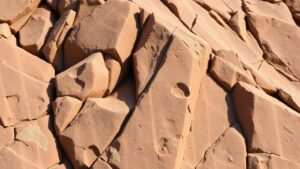Using Stream Eddies to Locate Heavy Mineral Deposits in Shallow Waters
Using Stream Eddies to Locate Heavy Mineral Deposits in Shallow Waters
In the world of mineral exploration, the detection of heavy mineral deposits plays a crucial role, particularly in shallow water environments. Stream eddies, which are circular currents occurring in rivers and streams, provide a unique opportunity for prospecting these valuable minerals. This article aims to illuminate the relationship between stream dynamics and the sediment transport of heavy minerals, equipping readers with foundational knowledge and practical techniques for application in the field.
Understanding Stream Eddies
Stream eddies are formed when the flow of water encounters an obstruction, causing the water to swirl in a circular motion. e eddies can vary greatly in size and strength depending on factors such as riverbed topography, flow rate, and the presence of vegetation or man-made structures. Understanding the environmental context of eddies is vital, as they play a central role in the transport and deposition of sediments.
The Role of Stream Eddies in Sediment Transport
Stream eddies are significant in the transport of sediments, particularly during periods of high flow. Heavy minerals, which include but are not limited to gold, ilmenite, and magnetite, are denser than typical sediment particles. r movement is influenced primarily by the velocity and direction of water flow. Eddies tend to create zones of low velocity, which encourages the deposition of heavier sediments.
- Velocity Gradient: The collision of fast-flowing water with slower-moving eddies creates a velocity gradient that aids in the separation and concentration of heavy minerals.
- Settlement Traps: Eddies can act as natural traps for minerals, collecting and retaining heavy particles that would otherwise be carried downstream.
Field Methods for Locating Heavy Minerals
To effectively locate heavy mineral deposits utilizing stream eddies, field methods must be grounded in hydrological survey techniques and sediment sampling. Following are some methods consistently employed in the field:
- Mapping Eddies: Field researchers should begin by mapping the locations of various eddies in a river or stream. This can be accomplished using GPS coordinates and visual observations.
- Sampling Techniques: Sediment sampling from the base of the eddy where deposition occurs is crucial. Core samples can provide a profile of sedimentary layers, revealing the concentrations of heavy minerals.
- Hydraulic Analysis: Analyzing water velocity and flow patterns can assist in predicting where heavy mineral collection may occur.
Real-World Application: Case Studies
In northern Australia, extensive studies have been conducted on the application of stream eddies for heavy mineral exploration. Researchers at the School of Earth and Environmental Sciences, University of Wollongong, focused on coastal rivers where heavy minerals are prevalent. r work illustrated how the study of eddy dynamics can lead to successful mining ventures. The research indicated that certain eddies consistently collected ilmenite and zircon, leading to targeted extraction operations that yielded economically viable quantities of heavy minerals.
Addressing Potential Challenges
While utilizing stream eddies to locate heavy mineral deposits offers numerous benefits, several challenges must be considered:
- Seasonal Variability: Water flow variations due to seasonal changes can influence the efficacy of eddies in sediment transport.
- Environmental Regulations: Compliance with local regulations regarding mineral extraction in waterways is essential to avoid ecological disruptions.
- Technological Limitations: The accuracy of GPS and sediment sampling methods may be affected under certain environmental conditions, necessitating alternative approaches.
Actionable Takeaways
For aspiring geologists and mineral prospectors, understanding the dynamics of stream eddies can enhance the effectiveness of exploration strategies. By focusing on:
- Mapping stream profiles and eddy locations
- Employing sediment sampling techniques at target eddies
- Staying informed about hydraulic dynamics
These steps can facilitate successful identification and extraction of heavy mineral deposits in shallow waters, contributing to a sustainable approach in the mineral exploration industry.



